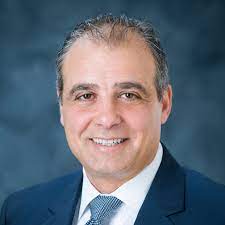She said, “That’s because it reminds us that we are all on the same journey on this planet and that we need to love and care for one another.” “I feel so peaceful when I’m here.” Traditional attractions include hayrides, food, and booths. The famous 63-egg cake is another highlight. Herren stated, “It’s always star of the show.” She will once again lead historic tours of the chapel grounds and grounds throughout the day. She said, “Taking in the history and beauty of the chapel is like drinking water from a fire hydrant.” “But it’s really not about the chapel as much it is about the community, people who built it, and the people who made it up.” The Johnstone family built the chapel, which was built in 1835. They moved from North Carolina to this area. John and Margaret Johnstone purchased 500 acres of land in Livingston in 1835. They planted cotton there. He bought more land over the years and ended up owning 2,560 acres. Their plantations were named Annandale after their Scottish ancestral home, and Ingleside after their daughter Frances Britton and her husband William Britton. Margaret started construction on the Gothic Revival-style chapel after John died in 1848. The chapel was constructed with clay and oak trees from Ingleside and Annandale. The first Episcopal Bishop in Mississippi, William Mercer Green, consecrated it on September 19, 1852. The congregation had declined by 1905 and no services were held at the chapel. The Episcopal Diocese declared it extinct. However, Margaret Britton Parsons (granddaughter of the Johnstones) worked to rebuild the congregation. In 1911, the doors opened for worship. The building was abandoned after 60 years of worship. Bill Buhner is the chapel’s immediate former junior warden on vestry. He also manages the ground and buildings. “Circuit preachers filled it,” the building was added to the National Register of Historic Places on January 21, 1971. In 1975, a group decided that the chapel needed to be restored. Herren stated that they had a different idea. “Let’s not destroy this building. Let’s save it.” The U.S. Department of the Interior granted them a $50,000 grant, but they had to match the funds. The group shared a rich history and used the original recipe for the 63-egg cake that Frances Johnstone Britton once made to celebrate the chapel’s past and to raise money for the future. Herren stated that she believes Margaret Johnstone would have been thrilled to see the Day in the Country grow into a celebration on her farm and a way to remember her family’s legacy. The chapel was made a parish in 1985 after years of effort to restore it to its former glory and attract parishioners. It is the fifth-largest Episcopal congregation in Mississippi, and it is one of the most photographed churches the South. It still needs regular maintenance. Buhner stated that there are always projects in progress. “We have had foundation problems and cracks. This is an old building so there will always be work to do. He said, “It’s fascinating to sit in an older building and worship.” “The space is not important to me. It is the worship service and those with whom you worship that matter most. However, the history of our church is so important to us, and that also means so many.” Tony Rischer, Day in the Country Chair, says the festival now has nearly 150 vendors and generates roughly $50,000 annually. He said, “There’s so many things to do here that day.” There’s something for everybody. Bring your children and have fun all day. He said that the average number of cars parked on the day is between 1,500 to 2,000. He said, “That’s a pretty good representation of how popular it is for our community.” The congregation splits the profits equally between preservation efforts as well as missions._x000D










